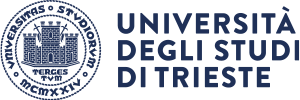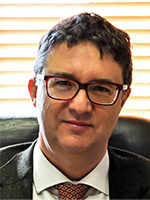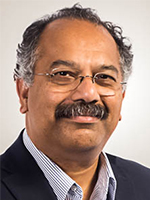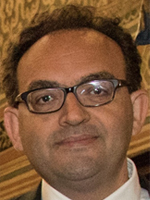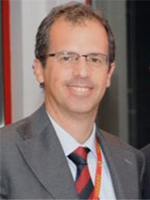|
|
Nicola Blefari-Melazzi University of Roma Tor Vergata Director of CNIT 5G: key issues and examples of applications
|
Abstract and Short Biography
Abstract
5G is the fifth generation of the global cellular network. Together with high-capacity fixed networks, 5G will provide the connectivity needed for our country’s digital transformation. With respect to previous generations, 5G continues an evolutionary path: its new radio improves performance in terms of speed, latency, terminal density and power consumption. However, the real novelty of 5G is the revolution it entails in terms of creating and facilitating new and diversified services and enabling new non-human users. Thanks also to its software network and full integration with the cloud, 5G will enable new use scenarios, with a significant impact in every sector: agriculture, commerce, defence, energy, finance, health, industry, media, public administration, safety, transport, tourism. In addition, applications’ sectors will be more and more actively involved in the creation and provision of services, taking full part in the 5G value chain. These characteristics taken together will give rise to an epochal transformation, also in terms of skills required to the technicians of the sector.
To efficiently support such diverse and demanding new applications 5G introduces several innovations, while posing new issues, especially in terms of security. In this talk I will present the main high-level characteristics and innovations of 5G, some open issues and examples of applications of special interest.
Short Biography
Nicola Blefari-Melazzi is a full Professor of Telecommunications at the University of Roma Tor Vergata, where he served as Chair of the PhD program in Telecommunications Engineering, Chair of the undergraduate and graduate programs in Telecommunications Engineering and Chair of the Department of Electronic Engineering. He is currently the Director of CNIT (National Inter-University Consortium for Telecommunications, http://www.cnit.it/), a non-profit Consortium among 37 Italian Universities. More than 1,300 people, belonging to the participating universities, collaborate with CNIT, while the number of own-employees is more than 100.
His research projects have been funded by Italian Ministries, by the Italian National Research Council, by major companies (e.g., Ericsson, Telecom Italia), by the ESA and by the EU. He has participated in 31 EU projects, playing the role of project coordinator and PI for seven of them. He has been an elected member of the board of the 5G Public Private Partnership association (https://5g-ppp.eu/), a 1.4 Billion Euro initiative established to create the next generation of networks. He evaluated many research proposals and projects in EU programs and served as TPC member, TPC Chair, General Chair and Steering Committee Chair for IEEE Conferences and guest editor for IEEE Journals. He is an area editor for Elsevier’s Computer Networks. He is author/co-author of about 250 papers. His research interests lie in the performance evaluation, design and control of telecommunications networks.
|
|
V John Mathews School of Electrical Engineering & Computer Science Oregon State University Corvallis, OR 97331, USA Neuroprostheses for amputees and patients with spinal cord injuries |
Abstract and Short Biography
Abstract
Recent technological innovations such as functional neuro-muscular stimulation (FNS) offer considerable benefits to paralyzed individuals. FNS can produce movement in paralyzed muscles by the application of electrical stimuli to the nerves innervating the muscles. The first part of this talk will describe how smooth muscle movements can be evoked using electrical stimulation via electrode arrays inserted into peripheral nerves. Animal experiments demonstrating the feasibility of the method will be described. The second part of this talk will describe efforts to interpret human motor intent from bioelectrical signals. Machine learning algorithms for accomplishing this objective will be presented. The decoded information can then be used to evoke desired movements of paralyzed muscles or to control prosthetic devices in patients with limb loss. Results of experiments involving human amputee subjects will be described and discussed.
Short Biography
V John Mathews is a professor in the School of Electrical Engineering and Computer Science (EECS) at the Oregon State University. He received his Ph.D. and M.S. degrees in electrical and computer engineering from the University of Iowa, Iowa City, Iowa in 1984 and 1981, respectively, and the B.E. (Hons.) degree in electronics and communication engineering from the Regional Engineering College (now National Institute of Technology), Tiruchirappalli, India in 1980. He was with the Department of Electrical and Computer Engineering at the University of Utah from 1985 until 2015. He served as the chairman of the ECE department at Utah from 1999 to 2003, and as the head of the School of EECS from 2015 to 2017.
Mathews’ research interests are in the theory and applications of signal processing and machine learning techniques in neural engineering, biomedicine, and structural health management. He is the author of the book Polynomial Signal Processing, published by Wiley, and co-authored with Professor G. L. Sicuranza, University of Trieste, Italy. He has published more than 175 technical papers, and is the inventor on ten patents.
Mathews is a Fellow of IEEE. He was the Vice President - Finance of the IEEE Signal Processing Society during 2003-2005, and the Vice President - Conferences of the Society during 2009-2011. He is a past associate editor of the IEEE Transactions on Signal Processing, and the IEEE Signal Processing Letters, and has served on the editorial boards of the IEEE Journal of Selected Topics in Signal Processing and the IEEE Signal Processing Magazine. He is a recipient of the 2008-09 Distinguished Alumni Award from the National Institute of Technology, Tiruchirappalli, India, IEEE Utah Section’s Engineer of the Year Award in 2010, and the Utah Engineers Council’s Engineer of the Year Award in 2011. He was a distinguished lecturer of the IEEE Signal Processing Society for 2013 and 2014, and is the recipient of the 2014 IEEE Signal Processing Society Meritorious Service Award.
|
|
Sergio Saponara Dip. Ing. Informazione Università di Pisa Electronics at the core of the Autonomous, Connected and Electrified Vehicles Revolution |
Abstract and Short Biography
Abstract
The talk, based on the IEEE DL held by S. Saponara, will discuss how Electronics is the core technology for the Autonomous, Connected and Electrified Vehicles Revolution and its social, economic, and environmental impacts. The autonomous and V2X networking capabilities of vehicles pose new challenges in terms of security, safety and AI-computing. These issues can be solved by a new generation of HW accelerated circuits and systems, such those developed in the European Processor Initiative. Furthermore, the transition towards electrified vehicle is boosted by high-efficient power-drive and smart converter circuits discussed in the talk.
Short Biography
Sergio Saponara, IEEE DL, is Full Professor at University of Pisa, where he is President of the BS and MS courses in Electronic Engineering, Director of the Summer School Enabling Technologies for IoT and of the specialization course Automotive Electronics and Powertrain Electrification. Marie Curie Fellow in IMEC in 2002, in 2014 he co-founded IngeniArs srl. Co-author of 300 indexed scientific publications and 20 patents, and AE of many IEEE and SpringerNature journals, he is PI of UNIPI in several on-going projects like European Processor Initiative, The European Pilot, Textarossa, Hiefficient.
Electronics at the Core of the Autonomous, Connected and Electrified Vehicles Revolution:
http://sie-2021.units.it/attachments/article/57/Saponara_SIE_8July2021.pdf
|
|
Claudio Silenzi Ferrari gestione sportiva Electronics in formula 1 |
Abstract and Short Biography
Abstract
The development of electronics in Formula 1 is an activity that has several specific aspects, compared to industrial activities. Development times are extremely short, workloads are seasonal, FIA regulations impose restrictions on what is allowed to be done. The reaction times to problems must be extremely short, and the class of components is closer to aerospace than to automotive.
Short Biography
Graduated from the University of Rome "La Sapienza" in Electronic Engineering. He initially carried out various jobs in the field of software development, and then joined Magneti Marelli Autronica in Turin, where he was involved in the design of control units. After a short period in Milan in charge of Alfa Romeo motorsport, he became a control systems developer as a resident engineer at Ferrari, where he initially dealt with gearbox control and then became responsible for the software development of the entire car, and then also responsible for hardware development. He was chosen in a small group to conceive, design and build the first energy recovery system for Ferrari formula 1, which then went on track successfully for a period of six years. He is currently responsible for the development of electronics in Ferrari's motorsport department. He is a member of the steering committee of the faculty of Electronics at the University of Modena and holds courses in Advanced Automotive Electronics (AAE) at the Motorvehicle University of Emilia-Romagna (Muner).
